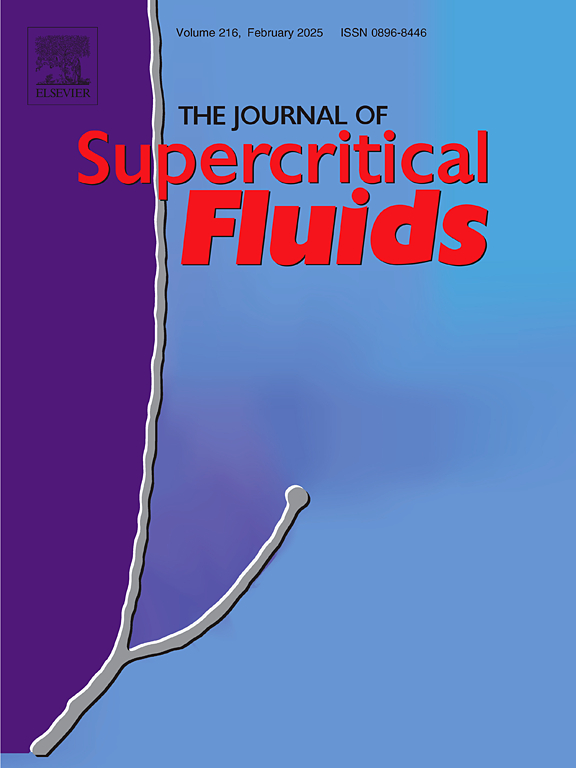提出了一种研究染色涤纶织物色强与染料相对浓度关系的新方法,并通过超临界流体处理对染色涤纶织物色强进行了可控改性
IF 3.4
3区 工程技术
Q2 CHEMISTRY, PHYSICAL
引用次数: 0
摘要
广泛使用的聚酯纤维通常具有优异的色牢度,这使得其色强(K/S值)的可控改性具有很大的挑战性,特别是在调节脱色方面。本研究基于染料经过超临界二氧化碳流体处理可迁移并达到再分配平衡的原理,研究了染色涤纶织物的颜色强度与染料相对浓度之间的关系。结果表明,该关系符合指数衰减拟合,允许使用导出的回归公式对染色涤纶织物的颜色强度进行可控修改。进一步阐明了超临界流体处理容器中残留染料与处理后织物色强之间的关系。为了验证上述策略的普遍性,本研究采用了具有代表性的蒽醌、杂环和偶氮结构的三种染料。超临界流体处理后,染料在涤纶纤维中均匀扩散,具有良好的色牢度。这些发现对于探索纤维在超临界流体中的染色行为,促进彩色聚酯的再利用和纺织品的碳中性,以及扩大超临界流体技术的潜在应用具有重要意义。本文章由计算机程序翻译,如有差异,请以英文原文为准。
A novel approach to investigating the relation between color strength and relative dye concentration and to controllably modifying the color strength of dyed polyester fabrics through supercritical fluid treatment
Widely utilized polyester fibers generally have excellent color fastness, making it quite challenging to controllably modify their color strength (K/S value), especially in regulated decolorization. In this study, the relation between the color strength and the relative dye concentration of dyed polyester fabrics was investigated based on the principle that dyes may migrate and reach redistribution equilibrium through supercritical carbon dioxide fluid treatment. The results demonstrated that the relation agreed well with an exponential decay fitting, allowing for the controllable modification of the color strength of dyed polyester fabrics using the derived regression formulas. Furthermore, the correlation between the residual dye in the supercritical fluid treatment vessel and the color strength of the previously treated fabric was clarified. To verify the universality of the above strategies, three dyes with representative anthraquinone, heterocyclic, and azo structures were employed in this study. Furthermore, it was observed that the dyes were evenly diffused throughout the polyester fibers following the supercritical fluid treatment, promising the fibers’ good color fastness. These findings might be significant for exploring the dyeing behavior of fibers in supercritical fluids, stimulating the reutilization of colored polyester and carbon neutrality of textiles, and expanding the potential applications of supercritical fluid technology.
求助全文
通过发布文献求助,成功后即可免费获取论文全文。
去求助
来源期刊

Journal of Supercritical Fluids
工程技术-工程:化工
CiteScore
7.60
自引率
10.30%
发文量
236
审稿时长
56 days
期刊介绍:
The Journal of Supercritical Fluids is an international journal devoted to the fundamental and applied aspects of supercritical fluids and processes. Its aim is to provide a focused platform for academic and industrial researchers to report their findings and to have ready access to the advances in this rapidly growing field. Its coverage is multidisciplinary and includes both basic and applied topics.
Thermodynamics and phase equilibria, reaction kinetics and rate processes, thermal and transport properties, and all topics related to processing such as separations (extraction, fractionation, purification, chromatography) nucleation and impregnation are within the scope. Accounts of specific engineering applications such as those encountered in food, fuel, natural products, minerals, pharmaceuticals and polymer industries are included. Topics related to high pressure equipment design, analytical techniques, sensors, and process control methodologies are also within the scope of the journal.
 求助内容:
求助内容: 应助结果提醒方式:
应助结果提醒方式:


